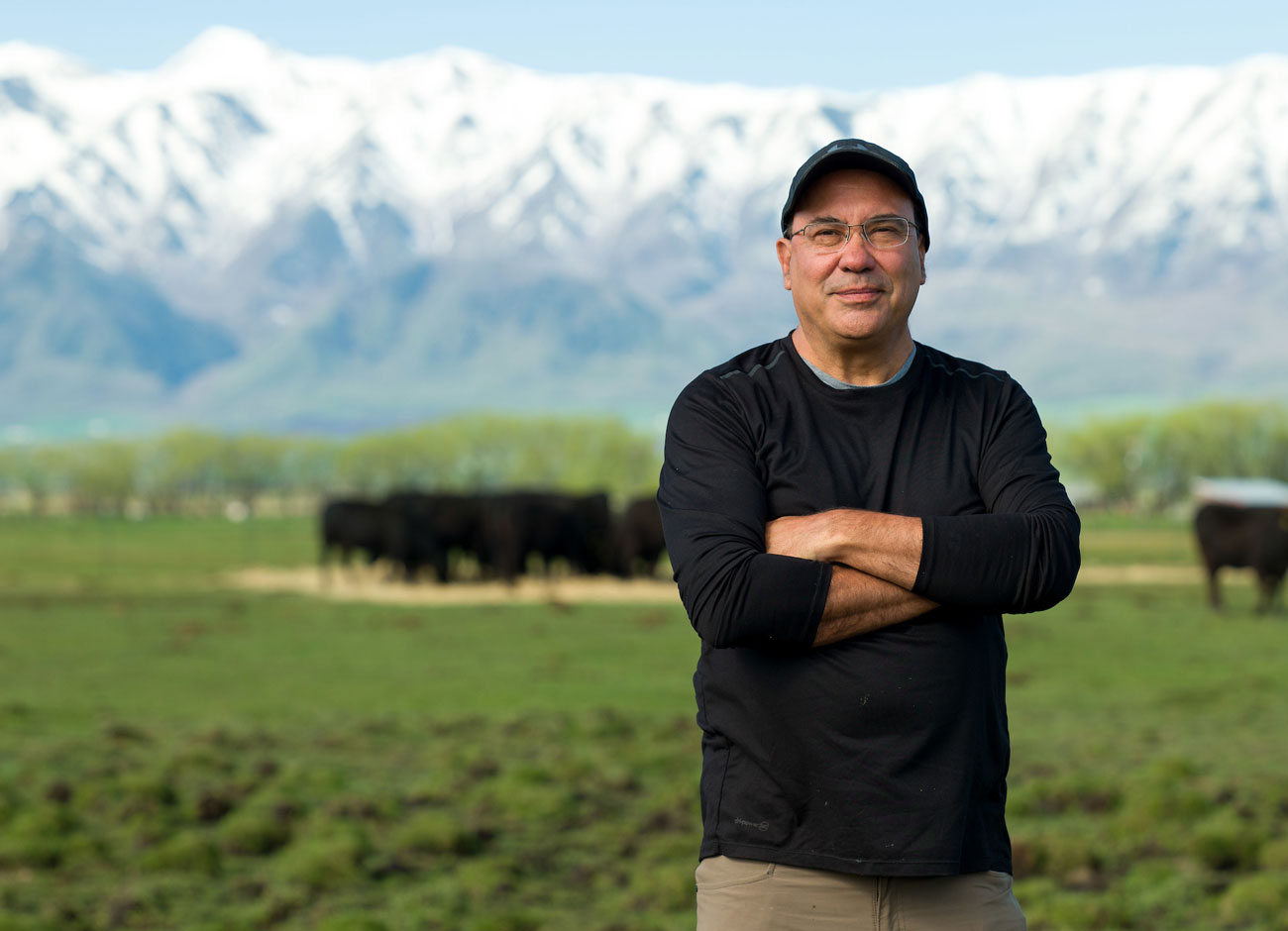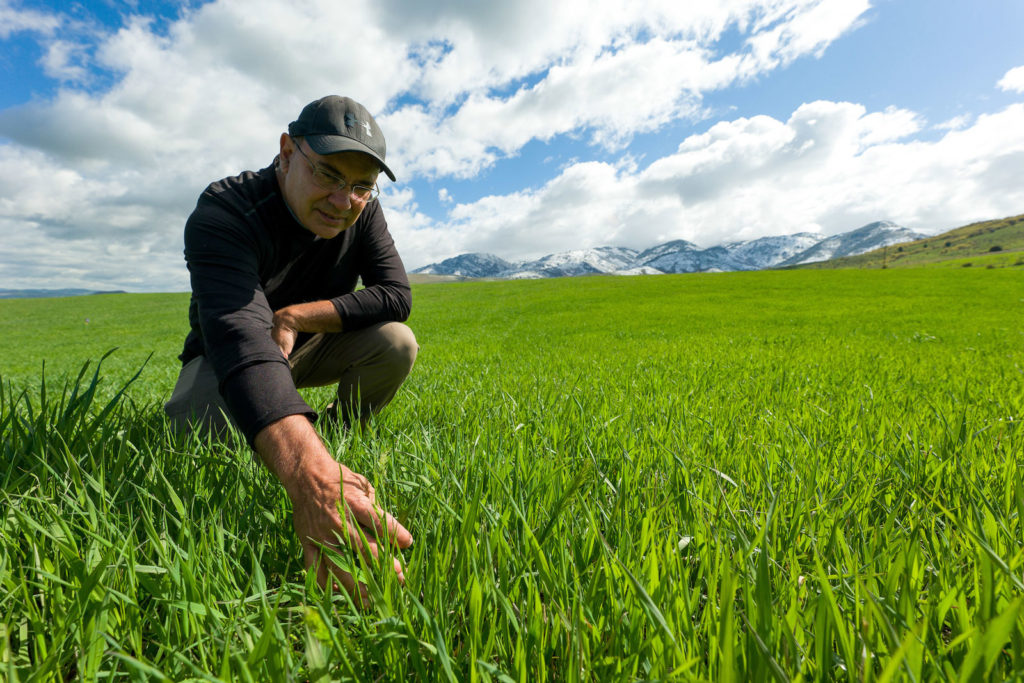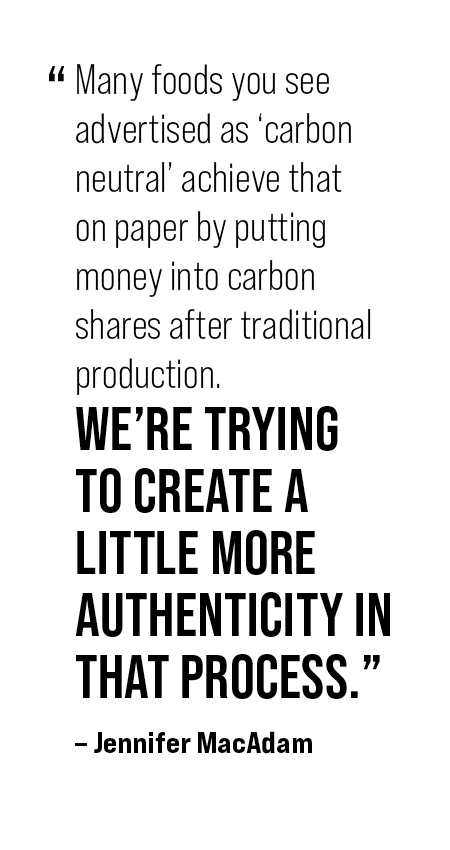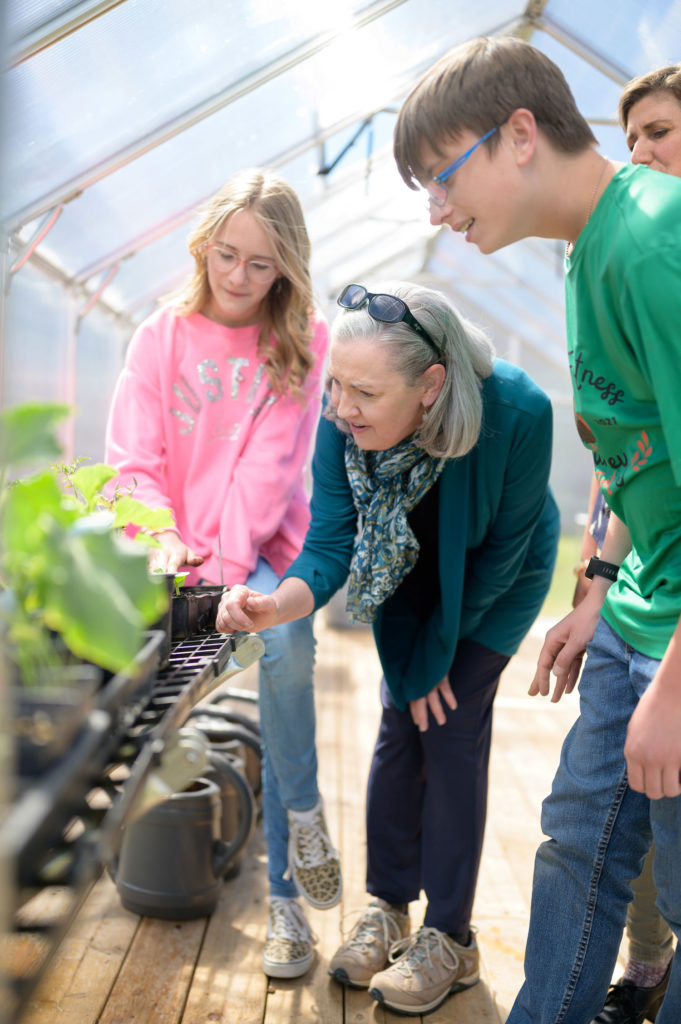Real Beef. Done Well. An Eco-Friendlier Meal Using ‘Smart Foodscapes’

There’s something utterly bewitching about the sound of steak dropping onto a hot, oiled skillet.
Or maybe it’s the umami scent of a bacon-topped burger sizzling on the grill, wrapped in smoke and flame. Or perhaps your preference is a perfectly peppered piece of beef jerky — one with a nice carnivorous bite to it. Beef is an American way of life — nine out of ten Americans regularly consume the stuff, eating, on average, more than 83 pounds per year. Although we often choose not to think about it, all those garlic-smothered shish-kabobs, slow-cooked Sunday roasts, and spicy bowls of chili con carne come from somewhere — cattle.
We also tend to overlook the fact that the production of beef has a real impact on the environment. Despite a growing recognition of the toll that the agricultural beef production has on natural water systems, plant ecology, air pollution, soils, animal quality-of-life, greenhouse gas emissions and more, it isn’t a habit we are readily willing to quit. In 2020 U.S. farmers and ranchers produced 27.6 billion pounds of commercial beef, and imported another 3.3 billion.

Here’s another fact with serious ethical sizzle: 15% of global greenhouse gasses are related to global agricultural production. You heard that right … a super-sized cut of global climate change is sitting smothered in au jus and horseradish on your dinner plate.
We’ll be honest … it’s on Juan Villalba’s plate too. He’s a professor of wildland resources in the Quinney College of Natural Resources and an expert in herbivore food selection (i.e. what open range cattle eat, and why). He and a team of experts in plant ecology, range management, agricultural production, economics, outreach, and education, have been set with a tough task — developing an eco-friendlier way to create a burger. The issue they face is cow burps.
You might be thinking, on an atmospheric scale, in a world of wildfires and oil drilling, is cattle belching really that big of a deal? And the answer is yes.
Methane is a natural by-product of the complex bovine digestive process, Villalba explains. When cattle eat, grass enters the rumen where microbes ferment it to break down otherwise-indigestible fibers. The process helps them to pull nutrition from rangeland plants, but it also produces massive amounts of methane, which cattle release (excuse you) into the atmosphere. This process occurs constantly. But as summer progresses, rangeland plants mature and grow tougher and more fibrous, making them more difficult to digest. The gut microbes in the rumen have to work overtime to break down the fibers, and more methane is pumped out.

It’s true that methane is shorter lived in earth’s atmosphere than the other big-impact greenhouse gas, carbon dioxide. But methane is a whopping 28 times more potent in warming our planet than carbon — creating a flash-bang effect that hits an atmosphere already stressed from other sources of global warming.
With this innovative project, Villalba’s team are killing several metaphorical birds with one stone: finding a way to cut harmful methane gasses, helping cattle to be healthier, creating more diverse rangelands, and all-the-while keeping ranches economically sound. They certainly aren’t the first ones to tackle greenhouse gas emissions from the agricultural industry, but their approach is more straightforward.
“Many foods you see advertised as ‘carbon neutral’ achieve that on paper by putting money into carbon shares after traditional production,” says Jennifer MacAdam, a team leader from the Department of Plants, Soils and Climate. Other companies tout products that simulate beef made from a chemical combination of lots of highly-processed vegetable sources.
“We’re trying to create a little more authenticity in that process, by actually adjusting the food system to reduce greenhouse gas emissions at the production level,” MacAdam says.
They are approaching this by changing the menu — for cattle. The team is developing ‘smart foodscapes’— diverse islands of nutritionally dense plants that are strategically placed on rangelands to improve cattle nutrition. These botanical oases offer cattle better grazing options and introduce chemical combinations in their guts to produce less methane. The foodscapes offer improved sources of plant protein and higher-quality vitamin content, especially late in the season when the quality of rangeland grasses drops precipitously. In addition, given the specialized chemicals they contain, these plants also act as pharmacies for wildlife and livestock. This means cattle will live healthier lives, have more nutritional tools to fight disease, and will require fewer dollars in supplemental feedings before they are turned into tacos and stroganoff. The nutrition-dense plant islands are designed with ecological bonus points too: increasing biodiversity on rangelands, boosting soils, and supporting pollinators.

Villalba relies on a computer model of the complete digestive tract of cattle to determine what combination of plants are best for digestion. A dash more Pokeberry; a dose or two of Persian clover; cut back on the crested wheatgrass. In one afternoon, he can digitally feed a season’s worth of plants in 50 different combinations to a virtual cow affectionately named “MINDY” — until he comes up with the best bio-chemical bet to cut down on methane.
Then the digital model can be moved to the lab and eventually tested on Utah rangelands. The researchers use these intensely-designed grazing patches to test how efficiently the plants can propagate themselves, how they support Utah’s native birds, bees, mammals, and whether other grazing animals in the wild such as elk and deer will use them like a botanical candy store. They’ll also be carefully mapping locations where the plant islands have the best chance to thrive year after year. And of course, they’ll be carefully monitoring how the new diet supports cattle digestion.
“If we can really understand how to better support these animals, we’ll be able to manage grazing and beef production in a way to become part of the long-term solution for our climate,” Villalba explains.
Then they face the next big hurdle: convincing the humans. The industry of beef agricultural production is culturally complex, economically mammoth, and historically deep. Ranchers often operate on tight economic returns, and can sometimes be hesitant to adopt new strategies on-the-fly. To help encourage innovation adoption, the team is developing demonstration plots where ranchers can observe the smart foodscapes on the ground. There are plans for demonstration gardens at Utah schools too, where children and teachers will have the chance to see first-hand how they can benefit Utah’s wildlife and ecology.
“The program has been designed to combine research with outreach,” says Eric Thacker, Utah’s Rangelands Extension Specialist. “The coolest part, I think, is that it provides some new management options for ranchers as conditions in our climate change.”
Thacker is setting up workshops and programs, and developing factsheets and websites, to give cattle producers from across the region access to the information the team is gaining from the research. The demonstration sites are also strategically placed around the state so agricultural producers from many communities will have a chance to see the benefits of adding diversity to rangelands, to learn the varieties of plants they could use, and to observe how the foraging patches might work for their herds.
If successful, this project could be a boon to herds, producers, and environmentally-conscious consumers. While managing the rate of human consumption (eating less meat) is still pivotal in finding balance on planet Earth, the incorporation of smart foodscapes into the system could mean that the next time you relax into a nice plate of aromatic smoked brisket, a perfectly cross-hatched porterhouse, or a steaming bowl of savory beef pho, that your food preferences and environmental consciousness might be a little more closely aligned.







David Secrist June 15, 2022
Very disappointing article about some interesting research. Many of the “facts’ stated early in the article are debatable at best and fabrications of the anti-meat environmental crowd at worst. Carbon released into the atmosphere by grazing animals is merely a part of the ongoing carbon cycle that has been in place for thousands if not millions of years. Unlike the burning of fossils fuels which brings carbon buried deep in the earth and releases it into the atmosphere, carbon generated by grazing animals resides in the forages they consume and a part of a natural cycle. Ruminant animals have been producing these gases for a very long time. In fact, long before domesticated cattle occupied the plains of North America, Bison roamed the prairies in numbers at least as large as today’s domesticated cow herd. These ruminants ate grass and produced carbon dioxide and methane just as cows do today. Dont turn to agriculture and specifically the cattle industry to solve your “global warming issue”. Agriculture produces food today for the 8 billion people on this planet with significantly less land and water than in years past. With the proper support Dr. Villalba, and other researchers at Utah State will continue to find ways to do this more efficiently.
Jim Jones June 18, 2022
Yes, very well stayed. The anti meat agenda has demonized beef for their own agenda. I work in both beef and vegetable production. I can say without a doubt that if beef is correctly produced ( regeneratively) it is far less destructive than vegetable production. Vegetable production is extremely destructive in most forms and needs to be called out for it.